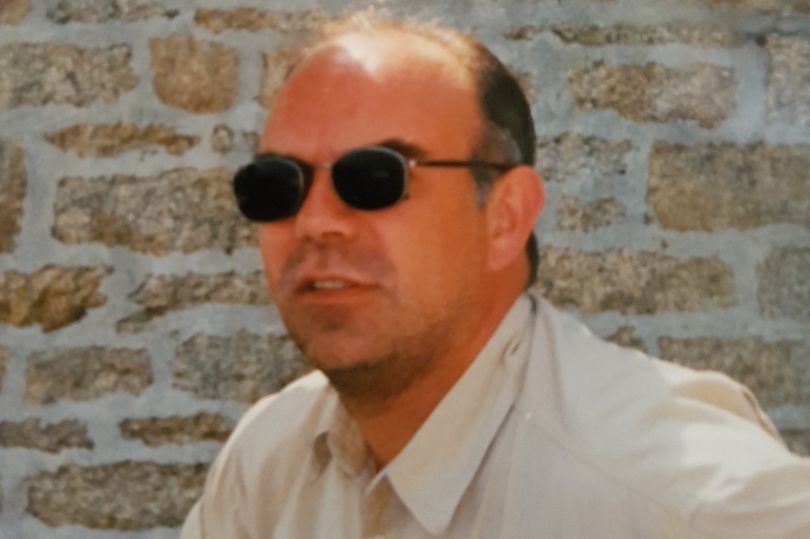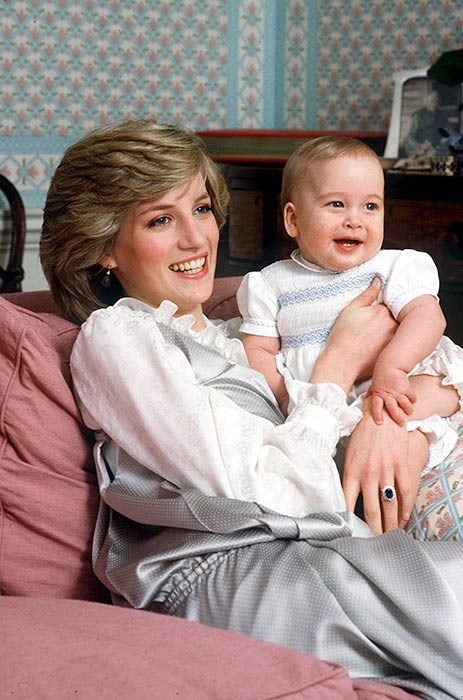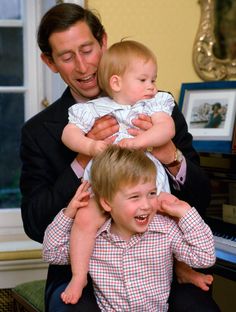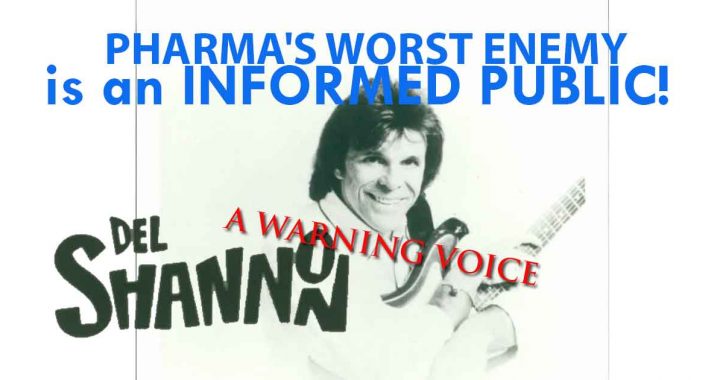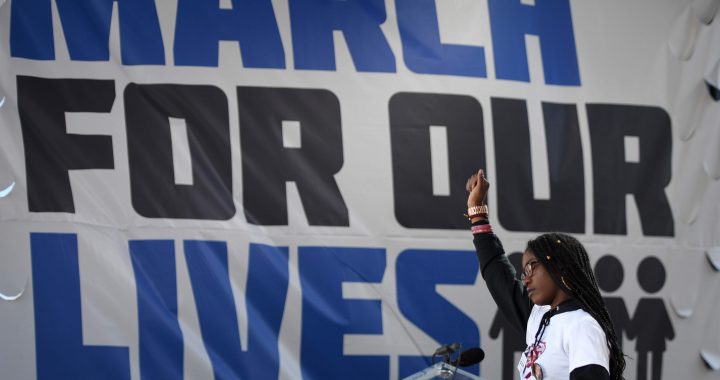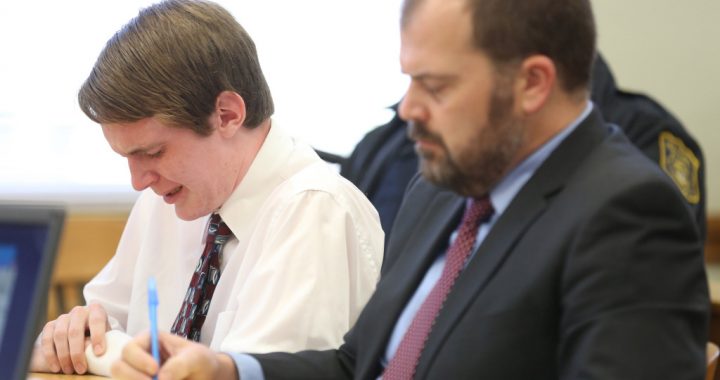Diana, the Princess of Wales
Antidepressants do not care WHO you are –
– The most talked about and most photographed woman on the planet, Diana, the Princess of Wales, who was given these drugs for postpartum depression after the birth of her first son … the drugs take their toll no matter who you are…
But Diana became a victim of Prozac from two directions – #1 her own prescription of Prozac and other antidepressants for postpartum depression which symptoms became evident several months after the birth of William, and #2 via the use of Prozac by her driver that fateful night, Henri Paul, as he drove them all into the tunnel of death for himself, Diana, and Dodi Fayed 20 years ago today on August 31, 1997.
– or a famous and loved comedian like Robin Williams, who in a dream state hung himself while on Remeron and another antidepressant
– or comedian Phil Hartman, whose wife, also in a dream state, shot him and herself, on Zoloft and Tramadol
07/19/1999 – My antidepressant made me do it! – Hartman estate says
See our Facebook pages:
Zoloft (sertraline) Should Be Illegal: https://www.facebook.com/groups/792517227522030/
Ultram (Tramadol) Should Be Illegal:
https://www.facebook.com/groups/657909314339394/?ref=br_rs
– or a famous singer like Del Shannon who impulsively shot himself after only 15 days on Prozac as his wife went to the local grocery store, Del’s widow’s attorney, Leonard Finz, approached his wrongful death suit with the same attitude all these cases should be approached, “We are charging Eli Lilly with the same culpability as if it was Eli Lilly’s finger around the trigger of the weapon that shot the bullet that ultimately took Del Shannon’s life.”
Listen to his widow’s testimony to the FDA:
1991 FDA Antidepressant Hearing: Le Anne Westover Testifies of Husband Del Shannon’s Prozac Suicide
See our Facebook page: Prozac (Fluoxetine) Should Be Illegal:
https://www.facebook.com/groups/ProzacandFluoxetine/?ref=br_rs
– or an extremely successful movie producer like Tony Scott, who impulsively stopped his car on a bridge off the coast of Southern California & jumped while on the antidepressant Remeron:
http://www.drugawareness.org/antidepressant-producer-tony-scott-suicide/
See our Facebook page: Remeron (Mirtazapine) Should Be Illegal:
https://www.facebook.com/groups/RemeronandMirtazapine/
– or the Crown Prince of Nepal, who shot & killed his own family, the entire Royal Family of Nepal & himself on an antidepressant he got while attending school in the UK
http://ssristories.drugawareness.org/archive/showec3d.html?item=1372
– or the leader of Venezuela, Hugo Chavez, on Prozac for years who died of cancer these drugs cause
– or Omar Bin Laden, the son of Osama Bin Laden, now diagnosed with antidepressant-induced Schizophrenia
http://nypost.com/2010/07/11/
First two paragraphs read: “Omar bin Laden, one of the worldwide terrorist leader Osama bin Laden sons, has checked into a mental hospital saying he hears his dad’s voice in his head, according to his now estranged wife, Zaina.”Suffering from what UK doctors are calling a “drug induced schizophrenia” due to prescription anti-depressants, reports The Sun, bin Laden’s use of the drugs led to erratic behavior patterns that became life threatening after just two months.http://www.
See our Facebook page: Antidepressant-Induced Bipolar & Schizophrenia
https://www.facebook.com/groups/1605446559734283/
Henri Paul, Princess Di’s Driver
Henri Paul the driver who experienced the overwhelming cravings for alcohol so many have reported over the years suffering from Prozac and drugs like it. Then with Prozac boosting his blood alcohol level to triple the legal limit he then sped at a speed estimated at 120 mph – 4 times the posted speed limit – “driving like a bat out of hell” as patients repeatedly report themselves doing under the influence of antidepressants.
(Information on antidepressant-induced alcohol cravings:
http://www.drugawareness.org/ssris-and-alcohol/
Our Facebook group on the same issue: https://www.facebook.com/groups/1688062138113514/)
My Call to the Paris Police
With the reports coming in of triple the legal limit of alcohol found in Henri Paul’s blood and the high rate of speed he was driving coupled with his family and friends saying he was not a drinker, yet he was being treated with another drug for alcohol withdrawal, this tragedy was beginning to scream Prozac to me. I had watched Diana’s life quite closely for years fearing that she would have a serious reaction to this drug that would endanger her life, but I had not considered that someone else’s use of the drug would be what could possibly take her life from her. But I immediately recognized the overwhelming cravings for alcohol I had witnessed non-stop with Prozac, then Zoloft, then Paxil – the reaction which first caught my attention to this whole group of drugs and caused me to continue on to write my book on them. After all I was living in Salt Lake City surrounded by Mormons who do not drink. Yet on these drugs they were becoming alcoholic almost over night and many of them were my good friends.
So with that experience I concluded the police needed to investigate this. I picked up the phone and called the police investigators in Paris to tell them they needed to test for Prozac and explained why I suspected they would find the drug. A week later in Paris the police publicly announced they had found therapeutic levels of Prozac in the blood of Henri Paul – a drug known to produce overwhelming cravings for alcohol and produce increased levels of alcohol in the blood. Ironically, or actually quite appropriately, on the same day at the University of Oslo in Norway my information on the overwhelming cravings for alcohol produced by the SSRI antidepressants was being presented.
Why would the police investigators listen to me where they may have dismissed just anyone else? The reason for that is because of a previous case I had worked with the lead police investigator there on another tragic Prozac case. The investigator had obtained a copy of my book and loved it! Now for those who have read my book, Prozac: Panacea or Pandora? – Our Serotonin Nightmare!, they will remember this case featured there that took place in France. That is the case of Kevin, from San Francisco, who was living in France with his German girlfriend.
Kevin’s mother reported to the FDA the following history of her son to show the total lack of depression in his life: “Kevin’s student years were happy years. He was a great source of joy to his parents. He had a thirst for life. His life is remembered as a series of vignettes – Kevin climbing the Great Wall of China; riding a camel to the Pyramids of Giza; watching with eager fascination the animals of the Serengetti; he skied during winter month vacations. He spent his summer months with his parents in a private hotel on the French Riviera. For Kevin it was like a summer home. Everyone remembers how popular he was with the staff; how disarming his irresistible love of life.”
“His curiosity and enthusiasm, the ease with which he made friends was always taking him off the beaten path. Once his parents took him with them to a Chamber of Commerce trip to the Soviet Union at a time when stringent security measures were still in force, Kevin went off on his own, met young people, enjoyed the amenities of Russian home life; all this to the amazement of nervous security people.” After graduating from Wharton he spent a year in Paris before he was diagnosed with Chronic Fatigue Syndrome. He was upbeat about his situation over the next two years…”he never gave up planning his future, nor was he wasteful of time. He worked on a book, composed music, read a lot, played piano. He spoke of his new life to come. He said he wanted to marry and have a large family. He promised his parents many grandchildren.”
“Kevin cherished his father. As an example of his love, he wrote in one of his letters to him, ‘Dad, you are a masterpiece of a father’. When his father died Kevin was a great comfort in pulling his mother through her sudden loss.”
“The summer of 1990 Kevin felt much better, enough so that he was able to join his parents at their summer home in France and spend several months there. He returned home for Christmas. It was during that visit he had an appointment with his doctor and was given Prozac for the occasional headaches which lingered from his CFS. He had no idea that he had been given a mind-altering drug, an antidepressant. He had a fear of sedatives and did not like taking chances of toxic reactions from drugs.”
Yet out of the blue that summer after being prescribed Prozac for those few lingering headaches Kevin had stabbed his girlfriend to death, then spent hours butchering himself. We know it took hours because Kevin recorded it all. Although left handed, he severed his right hand with a dull kitchen knife. Kevin finally died after he rammed a pencil through his eye.
The verdict out of France after an extensive investigation into this case was that this very violent murder and suicide was indeed caused by the American drug, Prozac.
The news around the world began reporting the Prozac connection to this tragic accident that had just robbed the world of a woman loved by so many.
Diana Driver had ‘Criminally High’ Blood Alcohol Level
“PARIS: The driver of the Mercedes Benz that crashed and killed Princess Diana and Dodi Fayed Saturday night was apparently drunk at the time of the high-speed accident, Paris prosecutors said today.Investigators said that Henri Paul, the Ritz Hotel’s number two security man, had a blood alcohol level of 1.7 grams per liter of blood more than three times the legal limit. Paul was not Fayed’s regular driver, who was instead used as a decoy for the paparazzi that were hounding the couple.
“Investigators said that Henri Paul, the Ritz Hotel’s number two security man, had a blood alcohol level of 1.7 grams per liter of blood more than three times the legal limit. Paul was not Fayed’s regular driver, who was instead used as a decoy for the paparazzi that were hounding the couple.
“Though he had received special security driving training from Mercedes-Benz, medical experts say that Paul could have been drunk enough to stagger and have blurred vision. At the moment of the crash, he had to contend with driving an unwieldy, armored Mercedes at speeds more than triple the posted 30 mph limit all the while being pursued by paparazzi on motor scooters. When the car entered the 660-ft. tunnel on the Place de l’Alma, investigators say, it struck the concrete divider that separates the eastbound lanes from the westbound and apparently cartwheeled, overturning, then spinning nearly 180 degrees. Fayed and Paul were killed instantly; the car’s horn wailed under the weight of the chauffeur’s body slumped against the steering wheel. A doctor was among the first at the scene and attempted to aid Diana, who was conscious though gravely injured, in the back seat. She died four hours later at the hospital.”
http://content.time.com/time/nation/article/0,8599,9272,00.html
The following article states [paragraph 37, under Prozac]: According to Ronald J Diamond, M.D., of the University of Wisconsin Department of Psychiatry and Medical Director, Mental Health Center of Dane County, WI, “Antidepressant medications can trigger a manic episode in some susceptible people. In addition, some schizophrenic clients are reported to get more disorganized or more paranoid when taking antidepressants.”
SSRIs such as Prozac can cause a craving for alcohol. This is even listed in the insert for Paxil. Since the liver cannot metabolize the combination of both an SSRI & alcohol, there is a synergistic effect of raised levels of both alcohol and Prozac/SSRIs.
Many books have stated that Henri Paul was a light to moderate drinker and that he was a quiet, unassuming man. Seven months before the accident he began taking Prozac due to sadness over the end of a 10 year relationship with his girlfriend. The night of the crash, this quiet, introverted man was seen in front of the hotel waving and gesticulating to the crowd. He appeared to be in a hypomanic state. Antidepressants can cause mania and hypomania according to the medical literature. In the Physicians Desk Reference, it also states that Prozac can cause [as a frequent side effect] the adverse reaction of confusion.
Here is the article from Dr. Ronald J. Diamond:
http://alcoholism.about.com/
With this news being released on Henri Paul’s use of Prozac the media picked it up and began to cover the issue as in the article below while Eli Lilly began stating that alcohol should not be used with their precious golden goose, Prozac. And it certainly would have had no impact upon this driver to produce such a tragic accident.
New Test Finds an Anti-Depressant in Diana Driver’s Blood
The statement said two drugs — fluoxetine and tiapride — were found in the blood of the driver, Henri Paul, 41. Fluoxetine, which was apparent in greater quantities, is the generic name of Prozac. Tiapride is often prescribed for the treatment of aggressiveness in alcoholics.
”Prudence in the use of these drugs is generally recommended for drivers of vehicles,” the office said.
The statement, based on further blood tests on Mr. Paul ordered late last week by the investigating judge in the case, Herve Stephan, appeared to add to the case of those arguing that it was the incapacity of the driver, rather than the pursuit by photographers, that was the central cause of the accident on Aug. 31.
Diana’s limo driver was ‘NOT an alcoholic depressive and was given clean bill of health days before fatal car crash’
http://www.mirror.co.uk/news/dianas-limo-driver-not-alcoholic-11061046
Diana Speaks to BBC’s Panorama in 1995 about her very happy pre-Prozac marriage
In following the hundreds upon hundreds of images of Princess Di and Prince Charles taken by photographers from the beginning of their fairytale come true relationship it is very easy to see the love in their eyes for one another. That is clearly beyond question. The looks they gave one another, the way Charles doted on the children as much as Diana did. You could tell they loved one another and loved their children very much. Diana’s interview below supports that as well.
The following are excerpts from her 1995 Panorama interview: http://www.bbc.co.uk/news/special/politics97/diana/panorama.html
DIANA: At the age of 19, you always think you’re prepared for everything, and you think you have the knowledge of what’s coming ahead. But although I was daunted at the prospect at the time, I felt I had the support of my husband-to-be.
BASHIR: What were the expectations that you had for married life?
DIANA: I think like any marriage, especially when you’ve had divorced parents like myself, you’d want to try even harder to make it work and you don’t want to fall back into a pattern that you’ve seen happen in your own family.
DIANA: I desperately wanted it to work, I desperately loved my husband and I wanted to share everything together, and I thought that we were a very good team.
BASHIR: How aware were you of the significance of what had happened to you? After all, you’d become Princess of Wales, ultimately with a view to becoming Queen.
DIANA: I wasn’t daunted, and am not daunted by the responsibilities that that role creates. It was a challenge, it is a challenge.
As for becoming Queen, it’s, it was never at the forefront of my mind when I married my husband: it was a long way off that thought.
The most daunting aspect was the media attention, because my husband and I, we were told when we got engaged that the media would go quietly, and it didn’t; and then when we were married they said it would go quietly and it didn’t; and then it started to focus very much on me, and I seemed to be on the front of a newspaper every single day, which is an isolating experience, and the higher the media put you, place you, is the bigger the drop.
And I was very aware of that.
BASHIR: How did you handle the transition from being Lady Diana Spencer to the most photographed, the most talked-about, woman in the world?
DIANA: Well, it took a long time to understand why people were so interested in me, but I assumed it was because my husband had done a lot of wonderful work leading up to our marriage and our relationship.
My Vicarious Introduction to a Very Private & Reserved Prince Charles
Now before I hear any Charles bashing today I will warn you that I will defend him as yet another victim of Prozac via the destruction caused by this drug upon his marriage and the loss of his family. I basically met Charles vicariously years ago after spending six months living with my good friend, Doris, in Germany. On my return trip home I met an amazing young Austrian doctor who I came to know quite well. Peter was just leaving England where he had spent the week at the palace chumming with Charles as an honor for his amazing work in medicine and being named the top young doctor in Austria.
Peter spoke quite a bit about Charles as he had just barely left his company after spending a full week with him and gave me much insight into who Charles is and what he is like as a person. I highly value Peter’s opinion and insight. He is a very brilliant and very insightful man. And for Peter to be so taken back by Charles as a person and a very intelligent and very caring person, I knew he must be a very fine human being…perhaps an inside insight into the man behind the crown and behind the pomp and ceremony that not many get a chance to have. I understood for Peter to be so impressed by this person he must truly be an incredible human being as Peter is not much for honoring anyone for anything other than who they are – status meant nothing to Peter.
I fear that much of what the world heard from Princess Diana about Prince Charles as she was looking through her Prozac colored glasses was distorted and that this is something she now would really regret. Remember back in 1993 the study that came out explaining the finding that Prozac turns the brain cells into corkscrew shapes. So scientifically we know the perception literally becomes twisted which explains why so many mates say that their mates on these drugs have accused them of being the reason for everything bad that has ever happened to them in their lives. As dreams and reality become so scrambled by these drugs the patients also do not know what is a dream and what is reality. This leads to many false accusations, especially when mixed with the paranoia that comes from these drugs.
Diana Speaks of Her Postpartum Depression
BASHIR: How did the rest of the Royal Family react when they learnt that the child that you were to have was going to be a boy?
DIANA: Well, everybody was thrilled to bits. It had been quite a difficult pregnancy – I hadn’t been very well throughout it – so by the time William arrived it was a great relief because it was all peaceful again, and I was well for a time.
Then I was unwell with post-natal depression, which no one ever discusses, post-natal depression, you have to read about it afterwards, and that in itself was a bit of a difficult time. You’d wake up in the morning feeling you didn’t want to get out of bed, you felt misunderstood, and just very, very low in yourself.
BASHIR: Was this completely out of character for you?
DIANA: Yes, very much so. I never had had a depression in my life. [Please note]
But then when I analysed it I could see that the changes I’d made in the last year had all caught up with me, and my body had said: `We want a rest.’
BASHIR: So what treatment did you actually receive?
DIANA: I received a great deal of treatment, but I knew in myself that actually what I needed was space and time to adapt to all the different roles that had come my way. I knew I could do it, but I needed people to be patient and give me the space to do it.
BASHIR: When you say all of the different roles that had come your way, what do you mean?
DIANA: Well, it was a very short space of time: in the space of a year my whole life had changed, turned upside down, and it had its wonderful moments, but it also had challenging moments. And I could see where the rough edges needed to be smoothed.
Diana wisely was very much opposed to medicine and prefered alternative treatment, but was persuaded to take Prozac and subsequently other antidepressants. Luckily over time she did add alternatives as well such as homeopathy and aromatherapy that proved to help her avoid many of the more extreme reactions to these drugs.
The Royal Prozac Divorce
From the early 1990’s I have called the SSRI antidepressants the “Divorce Pills” because of how they interfere with a marriage in so many ways. As an example I use Utah once again as I watched the progression of these drugs there and their negative impact upon the people there. With most being Mormon then and Mormons being married for not just time alone, but for time and all eternity, they had long had the lowest divorce rate in the nation but within the first seven years of Prozac being on the market that divorce rate surpassed the national average!
The largest LDS (Mormon) dating group in town asked me to come and speak about the drugs because they had also noticed that those who would come into their group, find a mate and marry, would soon divorce and be back in once again finding another mate and marrying, then come back again! The referred to the group as the revolving door group.
Then there was the woman sitting next to me in a business meeting right after the first edition of my book had just been published. (6/94) With a copy of the book sitting on my lap the woman looked at it and said, “Oh Prozac. My fiance swears that caused his divorce.”
I turned to her and said, “Well he is right. It is so common that I call the drug the Divorce Pill.”
She then voiced concerns they both had over the ex-wife admitting to taking $10,000 from her boss’s purse. I told her that was a symptom of kleptomania that can be caused by the drugs and needed to be addressed before she has more serious reactions that could really get her in trouble.
She then said they were not so worried about her as they were his 18 year old daughter who the mother got on Prozac.
I said, “Oh no! Don’t tell me she is pregnant already! I cannot hear about yet another teen getting pregnant on this drug!”
She said, “No, but she has been married FOUR TIMES this past year and preparing to get married for the fifth time!”
Husbands and wives have continually reported they no longer know who their mates are any longer as the personality changes are so drastic – personality changes the drug maker now states in the package insert should be reported to the physician. Tragically physicians have generally ignored those reports coming in from family members and often refuse to even discuss their loved one with them!
But all these relationship issues are easily understood when we know the following about elevating serotonin levels – most of which is the direct opposite of what the marketing claims are…
#1 Elevated serotonin produces argumentative behavior
#2 Elevated serotonin produces depression – just what someone needs when they are already depressed!
#3 Elevated serotonin is found in panic and anxiety and unjustified fears
#4 Elevated serotonin is found in hypomania and mania which can include impulsivity, a happy drunk state, promiscuity and even delusions. Here I am explaining that to the FDA in the 2006 hearings on antidepressants in those under 25 (Diana was in that age group when first prescribed these drugs): http://www.drugawareness.org/fda-testimony/dr-ann-blake-tracys-december-13-2006-to-the-fda
#5 Elevated serotonin is found in suicide, violent suicide, and repeated suicide attempts and once again I point out that when Diana was harming herself she fell into that age group.
#6 Elevated serotonin is found in psychosis, schizophrenia, hallucinations
#7 Not wanting to be touched
Dreams and reality become merged together as one becomes more and more toxic on these drugs making it very difficult to know what is real and what is not. Those suffering this reaction then begin to mix the two together thinking the nightmares they are having are in fact reality leading to many false accusations. In fact research was done on the Salem Witch Hunts which found that they were exposed to ergot poisoning.
Ergot is a fungus that grows on grain and it is the base for LSD. LSD produces its hallucinations by mimicking serotonin. So when the ergot is ingested the brain reads that as if it is increased serotonin levels and reacts accordingly thus producing hallucinations, delusions and even psychosis. So the same is happening as these Selective Serotonin Reuptake Inhibiting drugs gradually increase serotonin in the brain the patients begin dreaming things up because they cannot detect the dreams from reality. The distorted thinking brings on false accusations of abuse which certainly do not help build healthy relationships!
Princess Di began suffering many of the side effects of antidepressants not long after being prescribed the drugs. Most doctors do not even catch these changes in behavior as coming from the drugs themselves. A Yale study done in 2000 headed by Dr. Malcolm Bowers found that 11% of those in general hospitals suffering from mania induced by antidepressants – about one quarter of a million people! But they then raised concern that the actual figure would be far larger because the large majority of doctors do not recognize this as an iatrogenic effect (caused by the treatment) and do not label it as such, thereby causing serious problems for patients as they are continued on more and more medications to treat these symptoms which were caused by these drugs in the first place.
Charles Shares in a Letter to Nancy Reagan:
“Breakdown of My Marriage Was Like a Greek Tragedy”
The following excerpts from an article, an interview with an author of a 1999 biography about Princess Di, points out many of the side effects Diana began suffering from the antidepressants she was being given and mistakenly refers to it all as a “mental illness” – Borderline Personality Disorder which was almost unheard of before these drugs hit the market.
DI STRUGGLED WITH MENTAL DEMONS NEW BIOGRAPHY REVEALS HER PERSONALITY DISORDER
Charles Learns of Diana’s Death
https://www.youtube.com/watch?v=Cz33iRv51Dw
ANTIDEPRESSANT?? Another Great Comedian, Robin Williams, Lost to Suicide or Murder by Prescription?


